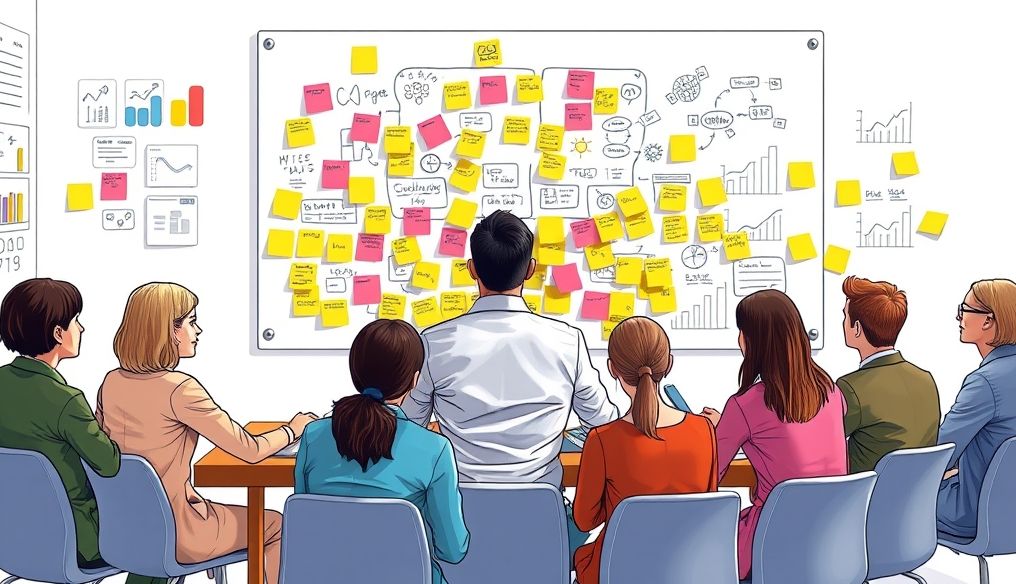How Can You Train Your Mind to Solve Problems Creatively?
In a world characterized by constant change and rapid innovation, the ability to solve problems creatively has become an essential skill for success in various aspects of life. Whether you are a student, a professional, or an entrepreneur, developing this ability can open new horizons and help you achieve your goals in innovative and unconventional ways.
What is Creative Problem Solving?
Creative problem solving is the process of finding new and innovative solutions to problems, often going beyond traditional or familiar solutions. It involves thinking outside the box, connecting unrelated ideas, exploring different perspectives, and experimenting with new approaches.
Why is Creative Problem Solving Important?
- Adaptation to Change: Helps you adapt to the rapid changes in the world around you and find innovative solutions to new challenges.
- Innovation and Excellence: Enables you to innovate new and distinctive products, services, and ideas, giving you a competitive edge in the job market.
- Performance Improvement: Helps you improve performance in various fields, whether at work, in studies, or in personal life.
- Increased Satisfaction: Gives you a sense of accomplishment and satisfaction when finding innovative solutions to the problems you face.
- Personal Development: Contributes to the development of your personality and mental abilities, such as critical and creative thinking and flexibility.
How to Train Your Mind to Solve Problems Creatively?
1. Challenge Your Assumptions
We often rely on our preconceived assumptions when facing problems, which can limit our ability to find creative solutions. Try challenging these assumptions and looking at the problem from different angles. Ask yourself: What am I taking for granted? Is there another way to look at this?
Example: If you are trying to solve the problem of declining sales in your company, you might assume that the reason is high prices. However, the real reason may be weak marketing or poor customer service.
2. Use Brainstorming Techniques
Brainstorming is an effective technique for generating creative ideas. Gather a team of people and ask them to come up with as many ideas as possible about the problem, without evaluation or criticism. Focus on quantity rather than quality at this stage. Then, evaluate the ideas and identify the best ones.
Tips for Effective Brainstorming:
- Set a clear goal for the brainstorming session.
- Encourage full participation from all members.
- Do not criticize ideas in the first stage.
- Build on each other's ideas.
- Record all ideas.
3. Explore Different Perspectives
Try to look at the problem from the perspective of another person, such as a customer, competitor, or expert in a different field. This may help you see the problem in a new way and find innovative solutions.
Example: If you are working on developing a new product, try to think about how the customer will use this product and what their needs and expectations are.
4. Connect Unrelated Ideas
Creative ideas often arise from connecting unrelated ideas to each other. Try to look for similarities between the problem you are trying to solve and other problems in different fields. You may find unexpected solutions.
Example: You may find solutions to a problem in the field of marketing by studying communication methods in the field of psychology.
5. Practice Lateral Thinking
Lateral thinking is a thinking style that relies on searching for unconventional solutions to problems. This involves challenging assumptions, ignoring obvious solutions, and looking for illogical or unexpected solutions.
Examples of Lateral Thinking Techniques:
- Random Word: Choose a random word and try to connect it to the problem you are trying to solve.
- Provocation: Propose a provocative or illogical idea and try to explore its implications.
- Reverse Thinking: Try reversing the problem and thinking about how to make it worse.
6. Be Curious and Open-Minded
Curiosity and openness to new ideas are essential qualities for creative thinkers. Read books and articles in different fields, attend events and conferences, and talk to people from diverse backgrounds. The more you are exposed to new ideas, the more you will be able to find creative solutions.
7. Experiment with New Approaches
Do not be afraid to experiment with new approaches to solving problems. You may fail at first, but do not give up. Learn from your mistakes and try again. The more you experiment, the more likely you are to find creative solutions.
8. Allocate Time for Creativity
Creativity needs time and space. Allocate regular time to think, reflect, and experiment with new ideas. This may be a few minutes each day or a few hours each week. Find a quiet and comfortable place where you can focus and think freely.
9. Use Creative Tools and Techniques
There are many tools and techniques that can help you develop your creative abilities, such as:
- Mind Maps: Help you organize ideas and connect them to each other.
- Illustrations: Help you visualize the problem and find visual solutions.
- Prototypes: Help you test ideas and identify potential problems.
- Computer Programs: There are many programs that can help you brainstorm and think creatively.
10. Don't Be Afraid to Fail
Failure is a natural part of the creative process. Do not let the fear of failure prevent you from trying new ideas. Learn from your mistakes and use them as an opportunity for growth and development. Remember that many great inventions and discoveries came as a result of repeated failure.
Conclusion
Training the mind to solve problems creatively requires continuous practice and effort. By challenging assumptions, using brainstorming techniques, exploring different perspectives, connecting unrelated ideas, and practicing lateral thinking, you can develop your creative abilities and achieve success in various aspects of your life.
Statistics and Figures:
- Studies show that companies that encourage creativity and innovation perform 20% better than other companies.
- 85% of executives say that creativity is the most important skill they need in the future.
- Creative thinking is considered one of the top 10 skills required in the global job market.
Practical Tips:
- Start with a simple challenge and try to find creative solutions for it.
- Look for inspiration in different sources, such as art, music, and nature.
- Share your ideas with others and ask them for feedback.
- Do not compare yourself to others, and focus on developing your own abilities.
- Enjoy the creative process and do not make it a burden.




